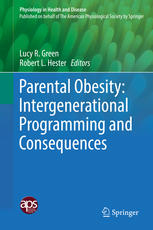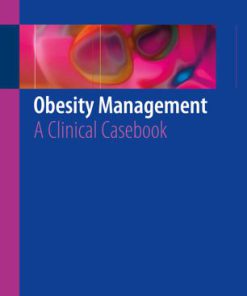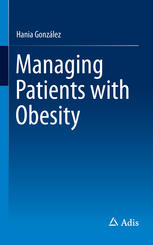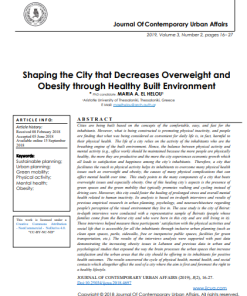Clinical Management of Overweight and Obesity Recommendations of the Italian Society of Obesity SIO 1st Edition by Paolo Sbraccia 3319245325 9783319245324
$50.00 Original price was: $50.00.$25.00Current price is: $25.00.
Clinical Management of Overweight and Obesity Recommendations of the Italian Society of Obesity SIO 1st Edition by Paolo Sbraccia – Ebook Instant Download/Delivery ISBN(s): 3319245325, 9783319245324
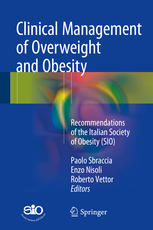
Product details:
- ISBN 10: 3319245325
- ISBN 13: 9783319245324
- Author: Paolo
These guidelines make recommendations regarding the management of individuals with a body mass index greater than 25.0 kg/m2 and cover all age groups, from children to the elderly, as well as various patient subsets. A range of measures to yield health benefits are set out, including healthy eating plans, increased physical activity, and behavioral modifications to help patients to manage obesity. In addition, recommendations are made on the use of bariatric surgery and the new antiobesity drugs.
Table of contents:
Part I: General Remarks
1: Overview of the Management of Obese patients
1.1 Management of Obesity-Affected People
1.2 Is It Strategic to Communicate Preliminarily the Typology of Treatment to the Obese Patien
1.3 How Long Should the First and the Control Visits Last?
1.4 How Important Is Health Worker Example?
1.5 Individual or Group Therapy: Which Is the Best One?
1.6 How Much Pedagogical Time Is Needed for the Obese Patient?
1.7 How to Evaluate Patient Appreciation?
Bibliography
Part II: Lifestyle Modifications
2: Diet Recommendations
2.1 Carbohydrates
2.2 Glycemic Index
2.3 Proteins
2.4 Fats
2.5 Fiber
2.6 Alcohol
2.7 Sweet Drinks
2.8 Sucrose and Other Added Sugars
2.9 Special Foods, Nutritional Supplements, Noncaloric Sweeteners
2.10 Mediterranean Diet
2.10.1 Dietary Recommendations in Some Clinical Conditions
2.10.1.1 Diet Therapy of Obesity in Adolescence
2.10.1.2 Diet Therapy for Obesity during Pregnancy and Lactation
2.10.1.3 Grade III Obesity
2.10.2 Specific Recommendations
2.11 Comments
2.12 FAQ
References
3: Physical Activity
3.1 Physical Activity and Global Health
3.2 Physical Activity and Prevention of Weight Gain
3.3 Physical Activity and Treatment of Overweight and Obesity
3.4 Physical Activity and Prevention of Weight Recovery
3.5 Comments
3.5.1 Physical Activity and Global Health
3.5.2 Physical Activity and Prevention of Obesity
3.5.3 Physical Activity and Weight Loss
3.5.4 Physical Activity and Maintenance of Weight Loss
3.6 Definitions
References
4: Therapeutic Education
4.1 The Therapeutic Alliance
4.2 The Therapeutic Adherence
4.3 Motivation
4.4 Problem Solving
4.5 Empowerment
4.6 Narrative Medicine
References
Part III: Treatment
5: Pharmacological Management
5.1 General Information and Therapy Initiation
5.1.1 Adult Patients
5.1.2 Pediatric Patients
5.1.2.1 Continuation of Therapy and Discontinuation of the Drug
5.2 Orlistat
5.3 Comments
5.4 FDA- and AIFA-Approved Drugs for Chronic Weight Management
5.4.1 Orlistat
5.5 FDA-Approved, EMA-Not-Approved Drugs for Management of Obesity
5.6 FDA- and EMA-Approved Drugs for Management of Obesity
References
6: Bariatric Surgery
6.1 Clinical Management of Overweight and Obesity, Recommendations of the Italian Society of O
6.1.1 Indications and Contraindications for Bariatric Surgery
6.1.1.1 Bariatric Surgery in Adults
6.1.1.2 Bariatric Surgery in Adolescents
6.1.1.3 Bariatric Surgery in Patients Aged Over 60 Years
6.1.1.4 Bariatric Surgery in Patients with BMI 30–35 kg/m2
6.1.2 Preoperatory Evaluation and Preparation for Surgery
6.1.2.1 Requirements for a Bariatric Surgery Center
6.1.2.2 Preoperatory Evaluation
6.1.2.3 Preparation for Surgery
Comorbidities Control
Preoperatory Weight Loss
Prevention of Thrombo-Embolic Complications
Antibiotic Prophylaxis
6.1.3 Surgical Techniques and Criteria for the Choice of the Operation
6.1.3.1 Surgical Techniques
Gastric Banding
Vertical Banded Gastroplasty
Sleeve Gastrectomy
Gastric Bypass
Single Anastomosis Gastric Bypass or Mini Gastric Bypass
Biliopancreatic Diversion
Biliopancreatic Diversion Duodenal Switch
Laparoscopy in Bariatric Surgery
6.1.3.2 Criteria of Choice of the Bariatric Operation
6.1.4 The Role of the Intragastric Balloon
6.1.5 Follow-Up
6.1.5.1 General Follow-Up for Bariatric Surgery
Nutritional Prescriptions
Drug Treatments
Endoscopic and/or Radiologic Control
Failures
Redo Surgery
Plastic Surgery
6.1.5.2 Follow-Up Notes Specific for the Single Bariatric Procedure
Adjustable Gastric Banding
Vertical Banded Gastroplasty and Sleeve Gastrectomy
Gastric Bypass
Biliopancreatic Diversion
References
7: Metabolic-Nutritional- Psychological Rehabilitation in Obesity
7.1 Recommendations
7.2 Comments
7.2.1 Clinical-Functional and Psychological Obesity and Disability
7.2.2 The Metabolic-Nutritional-Psychological Rehabilitation in the Treatment of Obesity
7.2.3 The Metabolic-Nutritional-Psychological Rehabilitation in the Healthcare Network
7.2.4 Evaluation of Obesity-Related Disability
7.2.5 Rehabilitation Intervention
7.2.6 Intensive Metabolic-Nutritional-Psychological Rehabilitation
7.2.7 Metabolic-Nutritional-Psychological Rehabilitation and Surgery (Bariatric or Plastic-Reconst
7.2.8 Metabolic-Nutritional-Psychological Rehabilitation Program
7.2.9 Intensive Rehabilitation Duration
References
Part IV: Obesity in Particular Conditions and Treatment Algorithm
8: Eating Disorders and Obesity
8.1 Classification and Diagnosis
8.2 Treatment
References
9: Obesity in Pregnancy
9.1 Introduction
9.2 Risks Related to Obesity During Pregnancy
9.2.1 Maternal Mortality and Comorbidities
9.2.2 Fetal Outcomes
9.3 Prepregnancy Care
9.4 Pregnancy Care
9.5 Nutritional Therapy
9.6 Partum
9.7 Postnatal
9.8 Pregnancy After Bariatric Surgery
9.9 Education of Health Professionals
References
10: Childhood Obesity
10.1 Introduction
10.2 Diagnosis
10.2.1 Clinical Diagnosis
10.3 Complications
10.3.1 Assessing the Risk of Cardiovascular Complications
10.3.2 Assessing the Risk of Nonalcoholic Fatty Liver Disease or Steatohepatitis
10.3.3 Mental Health Assessment
10.4 The Setting for Care
10.5 Treatment
10.5.1 Objectives
10.6 Nutrition
10.7 Physical Activity
10.8 Cognitive Behavioral Approach
10.9 Drug Therapy for Obesity
10.10 Bariatric Surgery
10.11 Prevention
10.11.1 Primary Prevention
10.11.2 Aimed Prevention
10.12 Teenagers with Obesity
10.12.1 Particulars of the Approach regarding Adolescents
Bibliography
11: Geriatric Obesity
11.1 Prevalence of Obesity in the Elderly
11.2 Clinical Evaluation of the Obese Older Subject
11.3 Obesity and Mortality in the Elderly
11.4 Clinical Consequences of Obesity in the Elderly
11.5 Treatment of Obesity in the Elderly
References
12: Multidimensional Assessment of Adult Obese Patient Care and Levels of Care
12.1 Multidimensional Assessment
12.2 Levels of Care
12.2.1 Programs Provided Directly by Primary Care Services (General Practitioners—GPs, Pediatric
12.2.1.1 Proposal for the Intervention of GPs with Obese Patients: Clinical Diagnosis
12.2.1.2 Proposal for the Intervention of GPs with Obese Patients: Management, Therapeutic Int
12.2.1.3 Treatment of Obesity at the Primary Care Service Level: How Long
12.2.2 Programs Supplied in Specialist Outpatient Settings
12.2.2.1 Proposal of Activities for Specialist Outpatients: Clinical Diagnosis
12.2.2.2 Proposal for the Specialist Intervention in Obese Outpatients: Management, Therapeutic
12.2.2.3 Specialist Intervention in Obese Outpatients: How Long
12.2.3 Programs Provided by Inpatient Specialists
12.2.3.1 Acute Care
12.2.3.2 Metabolic-Nutritional-Psychological Rehabilitation in a Semi-Residential or Residential
References
13: Treatment Algorithm of Patients with Overweight and Obesity: SIO (Italian Society of Obesity
People also search:
clinical management of obesity
clinical manifestations of obesity
medical management of obesity
clinical guidelines for obesity
what are the dietary management of obesity
You may also like…
Science (General)
Parental Obesity Intergenerational Programming and Consequences 1st Edition Lucy R. Green
Politics & Philosophy - Government & Politics
The Effects of Farm and Food Policy on Obesity in the United States 1st Edition Dr. Julian M. Alston
Politics & Philosophy





